Authored by Eluozo SN*,
Abstract
This paper monitored the transport of enteric virus applying non-homogeneous system, other works done was monitoring the system influenced by micronutrient in other predominant stratum, but the study looks at the variation of fluid velocity as a determine factor for the migration rate of enteric virus in coarse formation, such condition explained the rate of fluid flow velocity influence in growth rate of the concentration. The study observed linear trend on the migration rate, but at different conditions expressed in different figures, the concentration experienced variation such that the lowest velocity of flow experienced highest concentration, while the highest velocity of flow experienced the lowest concentration, this implies that the developed model express the influenced from variation of velocity refection on enteric virus in heterogeneous coarse deposition. The study is imperative because the previous study monitored the system on the migration rates based on the deposition of microelement that normally increase its population, but present study observed the effect from velocity variation and its rate of deposition as determination factor for the growth rate of the contaminant in the study environment. This implies that the velocity deposition precisely monitors it observation as it become the determination factor for the depositional variation of enteric virus in coarse depositions.
Keywords: Modeling; Transport enteric virus velocity; Coarse deposition
Introduction
In recent two decades, several of experts have carried out studies on batch, flowing column, this also includes field experiments on the subsurface viral performance. Good number of the processes affected in ground water viral fate and transport, results on permanent removal of virus from through irreparable attachment, reversible attachment, and inactivation developed only irreversible attachment. Properties of virus has been observed controlled ground [1-4], the properties of the porous medium [5,6], and the properties of water transporting the virus [7-11]. This process of governing virus fate and transport were observed not to be based on the fact that the study never considers all the controlling factors from the three aspects listed. [12-14] The electrostatic attraction and repulsion, van der Waals forces, and hydrophobic influences are three foremost forces accountable for communication between the virus and the porous medium [15-19].
Theoretical Backgrounds
Nomenclature:
C = Enteric Virus Concentration
A(x) = void Ratio /Porosity of soil
B(x) = Permeability of Soil
C-n-[α1x] = Velocity of Flow
x = Depth

Transform the above Bernoulli’s Equation to a linear first order DE gives:


Use I.F to Solve (2) above
Hence, the general Solution becomes:

Materials and Method
Standard laboratory experiment where performed to monitor Enteric Virus using the standard method for the experiment at different formation, the soil deposition of the strata were collected in sequences base on the structural deposition of the lithology at different locations, this samples collected at different location generated variations at different depths producing different Enteric Virus concentration through column experiment, from the pressure flow at different strata, the experimental result were compared with the theoretical values for the validation of the model.
Results and Discussion
Results and discussion are presented in Tables 1-7 including graphical representation for Enteric Virus concentration.
Table 1: Predictive and experimental values of enteric virus concentration at different depth.
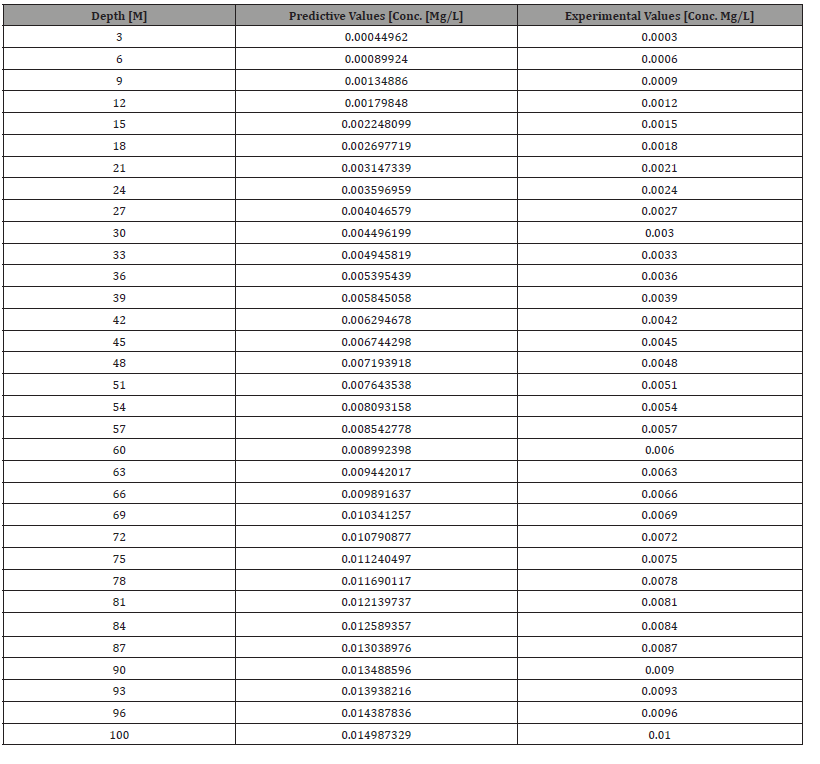
Table 2: Predictive and experimental values of enteric virus concentration at different depth.
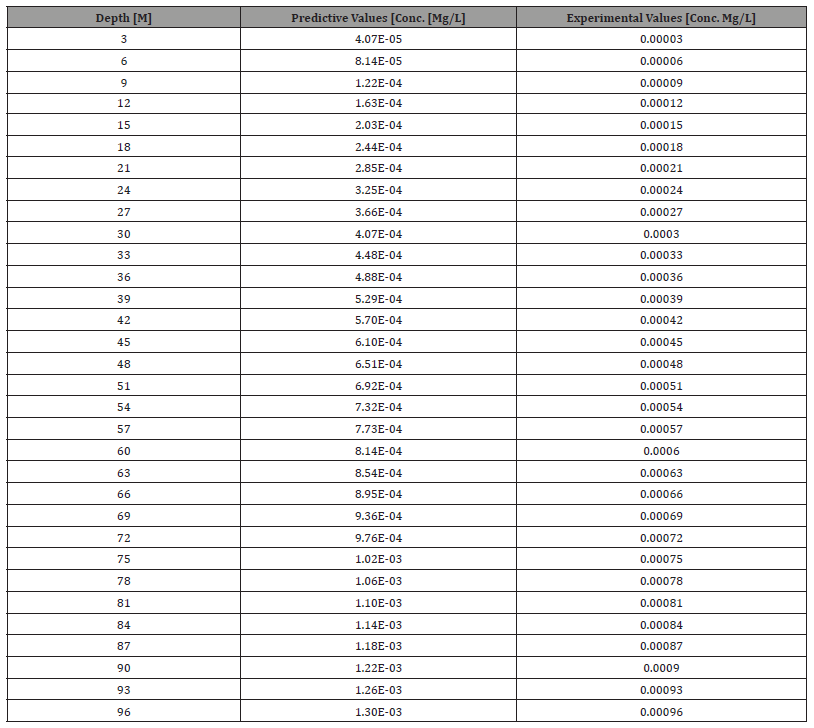
Table 3: Predictive and experimental values of enteric virus concentration at different depth.
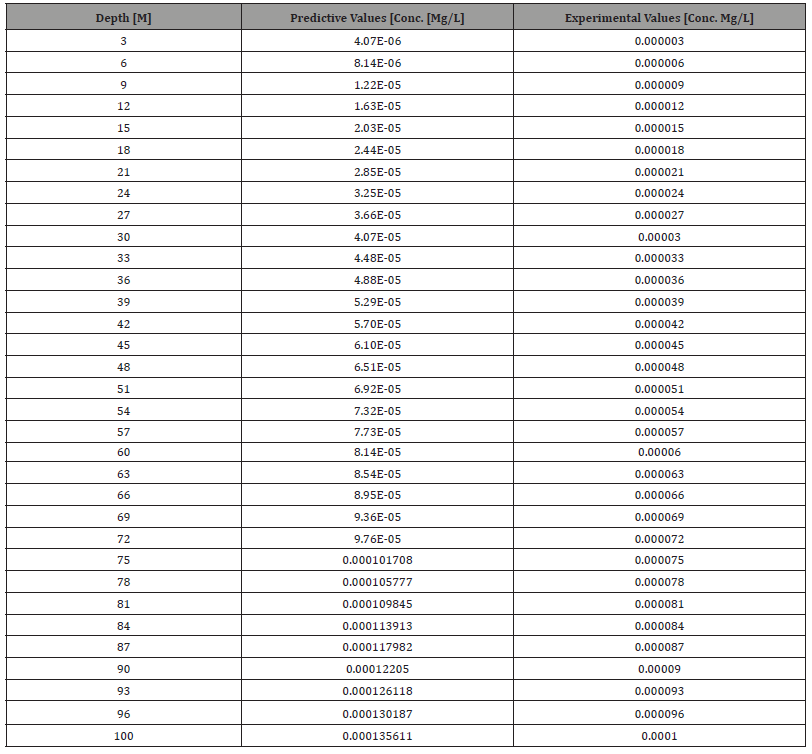
Table 4: Predictive and experimental values of enteric virus concentration at different depth.

Table 5: Predictive and experimental values of enteric virus concentration at different depth.
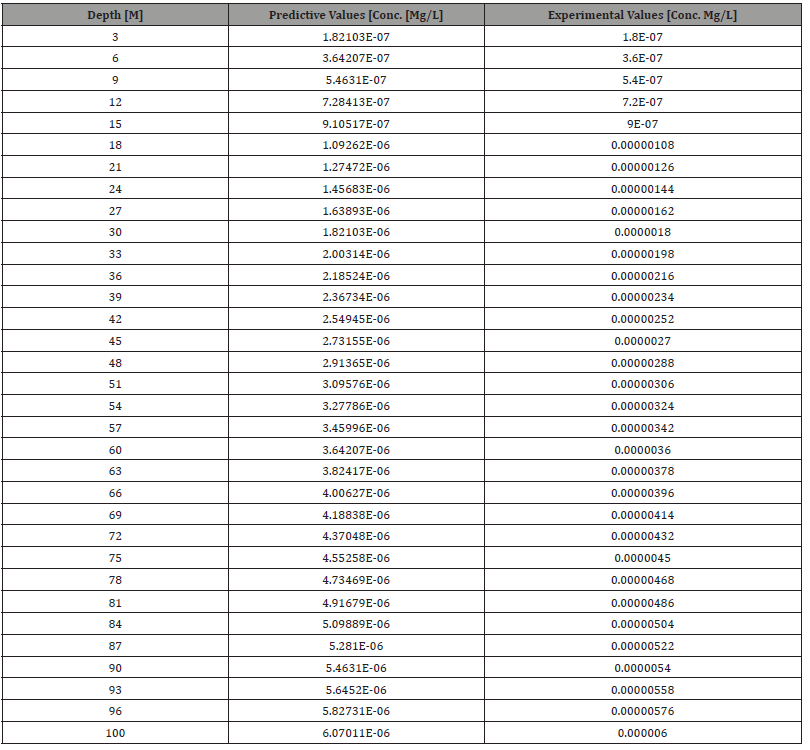
Table 6: Predictive and experimental values of enteric virus concentration at different depth.
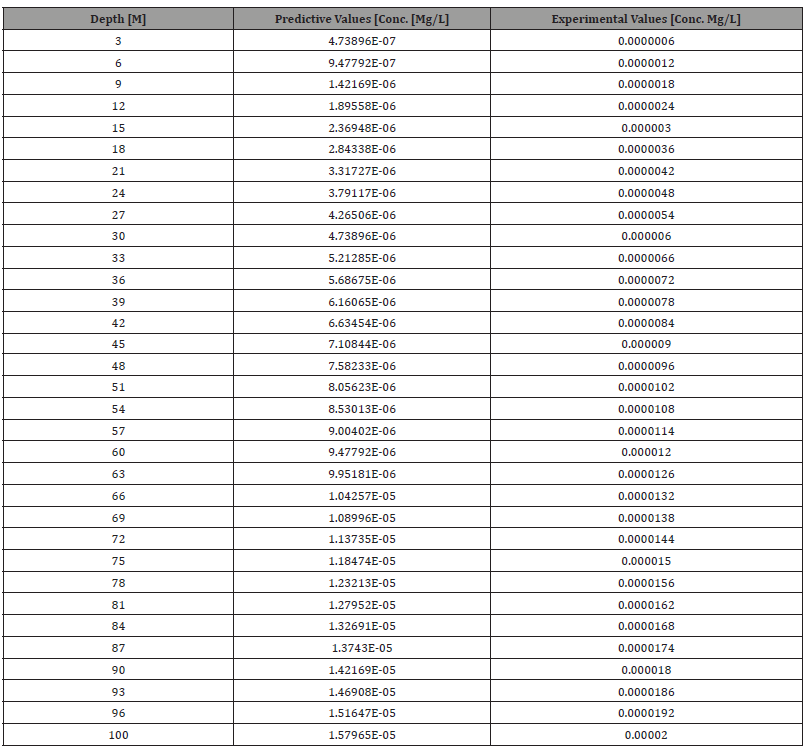
Table 7:Predictive and experimental values of enteric virus concentration at different depth.
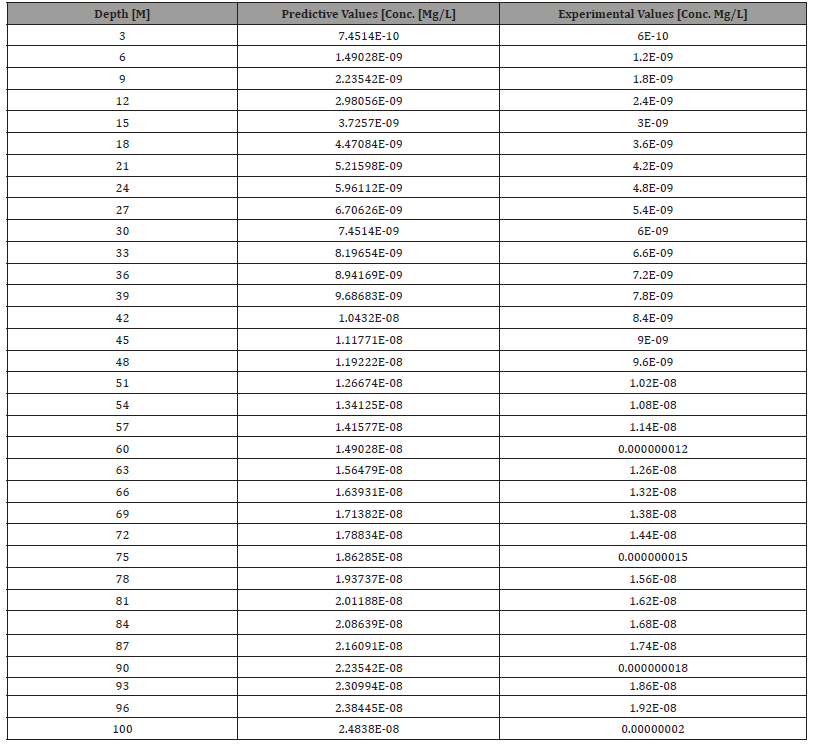
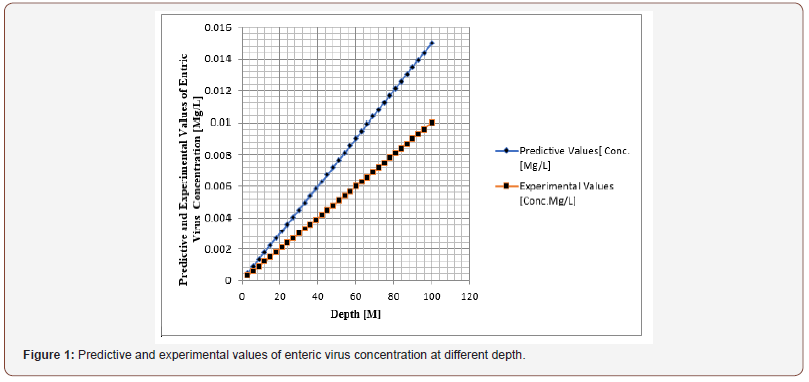
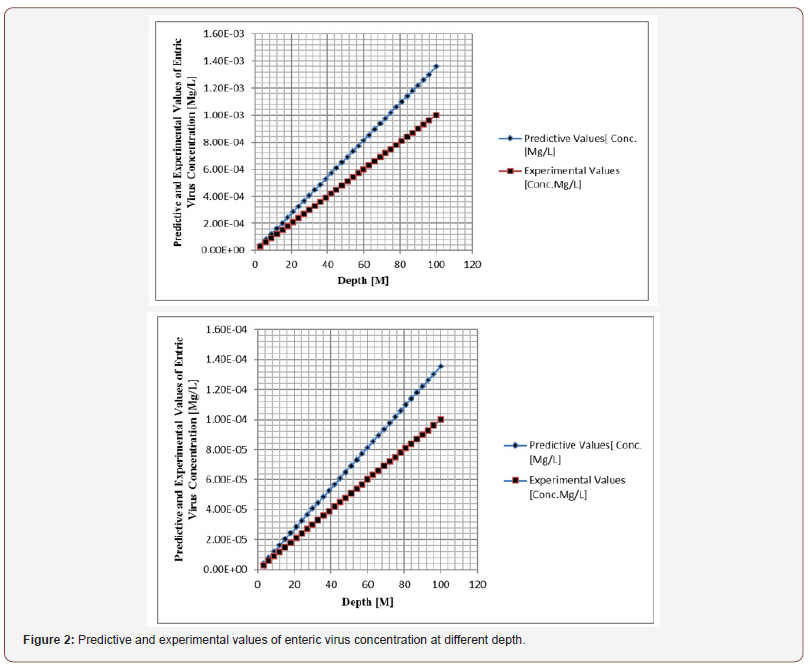
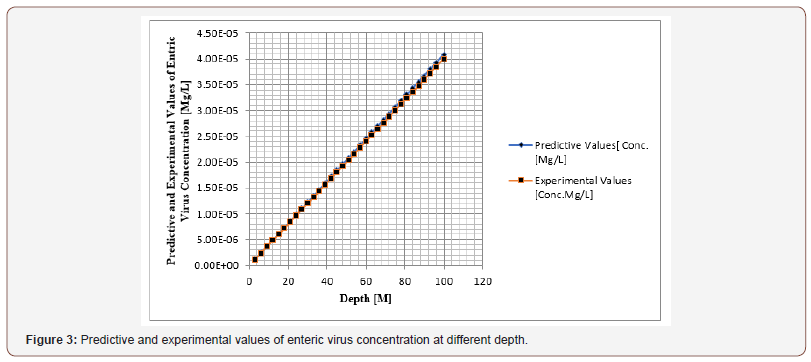
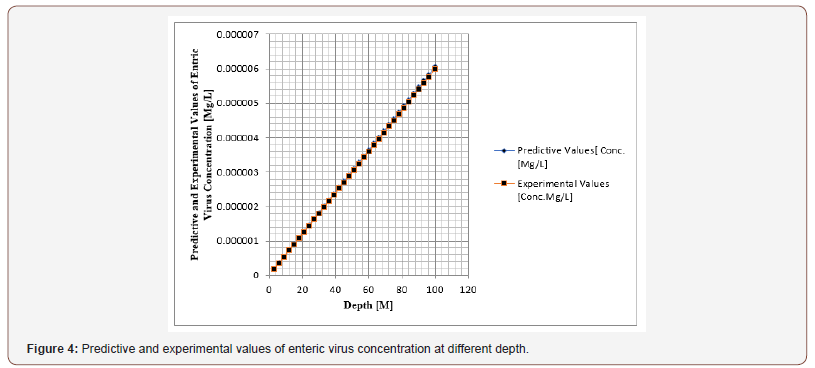
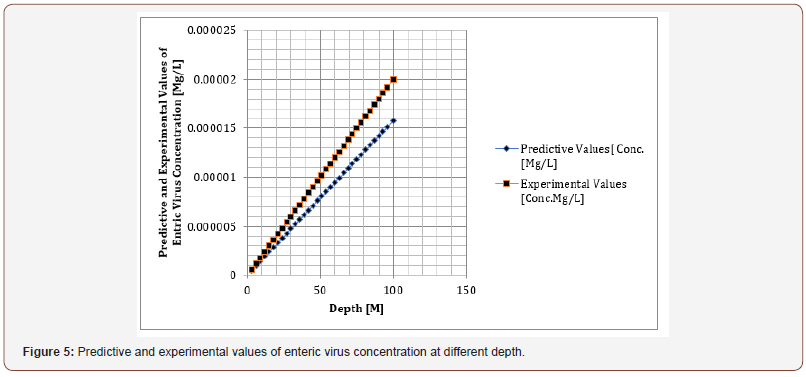
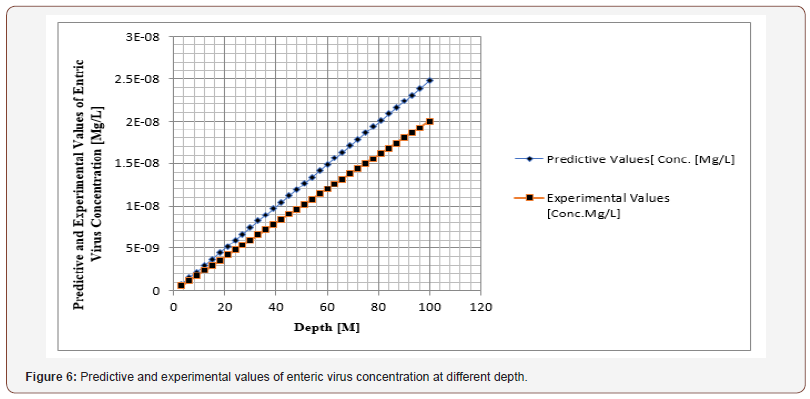
The study graphical representation from Figure 1-6 shows the behavior of the system in terms of the deposition of enteric virus and its transport process, linear trend were observed from the deposition of enteric virus in the coarse structural deposition, the study experienced linear exponential growth on the concentration of the contaminant, but the heterogeneity were not experienced on the rate of migration but through the variation of concentration in different location, the simulation values monitored the system in different conditions and find out that the concentration reduce with respect to variations of velocity of fluid flow in various location, these were expressed in different graphical representation, the concentration at various figures were heterogeneous, the study experienced the rate of transport process and observed influenced from velocity heterogeneous deposition in coarse formation, such condition also explained from the figure that the velocity of fluid transports contaminants reflect its behavior based on this factors in this stratum depositions. The study also observed other conditions such as microelement that may also express its positive impact on the contaminant by increasing their populations, the fluctuation of concentration are observed from variation of concentration from figure one at highest concentration in three meters, while the lowest concentration were experienced in figure six at three and hundred meters. Validation of simulation results were subject to experimental data and both parameters developed best fits correlation.
Conclusion
The study has monitored the system applying non-homogeneous system, this application was used to monitor the behavior of enteric virus in heterogeneous coarse deposition, this study developed this concept to adopt in deltaic and non-deltaic environment, and the derived model generated the applied techniques to predict the heterogeneous velocity of flow influence on the migration of enteric virus in heterogeneous coarse formation. The study express variation of velocity influenced on concentration of enteric virus in different simulation , these are where the concentrate growth rate determined the rate of velocity deposition in heterogeneous coarse formation, linear trend were experienced to the optimum value, but the concentration are not homogeneous due to fluctuation influenced from velocity of flow, the study observed linear condition on the trend, but the actual concentration are not linear, the optimum concentration are based on the lowest velocity of flow were accumulation of contaminant are experienced in the formation. This implies that the velocity of flow from the research study reflect the rate of enteric virus contamination in different depositions.
To read more about this article...Open access Journal of of Engineering Sciences
Please follow the URL to access more information about this article
To know more about our Journals...Iris Publishers
To know about Open Access Publishers





No comments:
Post a Comment